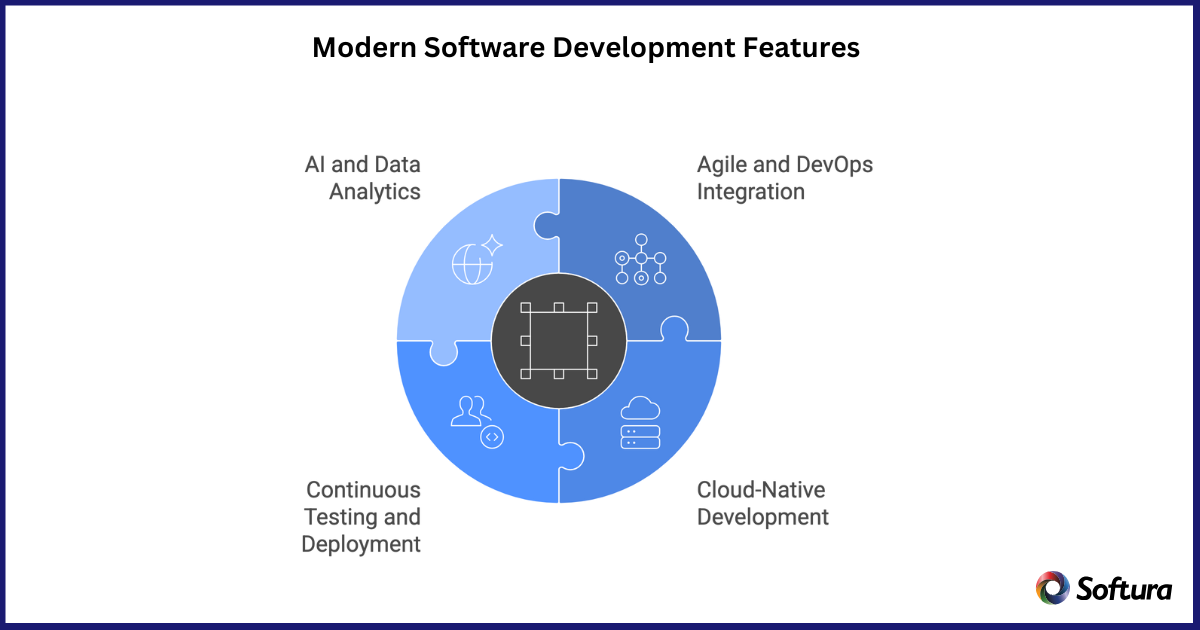"Our integration with the Google Nest smart thermostats through Aidoo Pro represents an unprecedented leap forward for our industry."
- Antonio Mediato, founder and CEO of Airzone.
Businesses today rely heavily on software to deliver value, improve efficiency, and stay competitive. Yet, many companies unknowingly hold themselves back with outdated or misaligned software development services. What once worked five years ago may now be the silent bottleneck limiting innovation, scalability, and customer satisfaction.
This isn’t just about technology - it’s about business strategy. When software fails to evolve with the organization’s needs, it slows progress. Let’s explore why that happens and how to fix it before it costs more in missed opportunities.
Every business leader understands the pain of technical debt — but fewer realize that outdated development processes are often the root cause. Using legacy frameworks or rigid project management models can lead to longer timelines, higher costs, and frustrated teams.
C-level executives frequently highlight a recurring challenge: their dedicated development teams spend more time maintaining old systems than building new capabilities. This imbalance drains resources and prevents the company from pursuing transformative initiatives like AI integration or automation.
Common Warning Signs Include:
These issues aren’t isolated — they signal that your development model no longer fits your growth strategy.
"Our integration with the Google Nest smart thermostats through Aidoo Pro represents an unprecedented leap forward for our industry."
- Antonio Mediato, founder and CEO of Airzone.
Many businesses rely on traditional, siloed software development services that fail to adapt to evolving customer expectations. When development teams operate in isolation, it creates barriers that slow delivery and reduce product quality.
For instance, a leading manufacturing firm once followed a rigid waterfall approach. Each phase had to be fully completed before moving on to the next, causing months-long delays. After switching to an agile methodology, the company reduced its time-to-market by 40% and improved customer satisfaction.
According to Forbes Technology Council, companies that have adopted agile practices are better equipped to respond to customer needs, improve productivity, and deliver higher-quality software faster.
Why This Happens:
These barriers limit innovation and ultimately, growth.
"By analyzing the data from our connected lights, devices and systems, our goal is to create additional value for our customers through data-enabled services that unlock new capabilities and experiences."
- Harsh Chitale, leader of Philips Lighting’s Professional Business.
In a fast-moving market, agility isn’t optional — it’s survival. Businesses stuck in outdated software development services lose the ability to respond to new trends or customer demands.
For example, several companies during the pandemic struggled to transition their on-premises systems to cloud-based platforms quickly. Those with flexible development practices adapted within weeks; others took months, losing customers in the process.
As one CTO put it, “Our inability to pivot fast enough wasn’t a technology problem — it was a process problem.”
The takeaway is clear: modernizing development practices doesn’t just save time — it safeguards competitiveness.
When software development services fall short, the consequences extend beyond IT. The business as a whole feels the strain.
This isn’t just inefficiency — it’s lost opportunity.

The best-performing organizations have evolved from viewing development as a cost center to seeing it as a strategic enabler. Modern software development services emphasize speed, collaboration, automation, and scalability.
Key Features of a Modern Approach:
Modernization isn’t just a tech upgrade — it’s a cultural shift that aligns people, process, and technology.
C-level leaders across industries emphasize one point — innovation and agility now define success. They’re pushing for software development services that create flexibility and empower business evolution.
One CIO in the financial sector noted that adopting a DevOps-based delivery model cut release times by 50%, enabling faster customer feedback loops. Another CTO shared that cloud migration paired with microservices architecture helped the company scale dynamically without increasing infrastructure costs.
These insights underline a trend: leadership is prioritizing adaptability over control.
Too often, businesses assume modernization means replacing everything — but it’s more about optimizing what exists. Incremental modernization, like moving APIs to the cloud or automating testing, can yield major performance boosts without massive disruptions.
In today’s competitive landscape, success depends on balancing innovation with continuity. Businesses that treat modernization as a continuous process — not a one-time project — stay ahead.
Transforming your software development strategy requires a structured, yet adaptable plan. Here’s how companies are making the shift effectively:
Identify bottlenecks, outdated tools, and redundant workflows. Use metrics like time-to-deploy and mean time to resolution (MTTR) to measure efficiency.
Encourage cross-functional collaboration, shorter release cycles, and automated testing pipelines.
Move toward modular architectures that enable scalability and rapid deployment.
Invest in UX/UI design to ensure every solution delivers measurable value to end users.
Gather input from customers and internal teams regularly to guide iteration.
Modernizing development isn’t an expense — it’s an investment. Companies that have upgraded their software development services report measurable gains:
These findings, as highlighted in Forbes Technology Council’s insights, reinforce the measurable impact of modern practices on business agility.
A high-performing development team doesn’t just code — it collaborates, experiments, and aligns closely with business goals. Investing in training, automation, and agile practices helps teams deliver consistent value at scale.
Companies like Softura specialize in aligning modern tools with proven methodologies, enabling organizations to transition smoothly from legacy constraints to digital maturity.
Every business reaches a point where legacy practices no longer support future ambitions. The real question is whether leadership acts before inefficiency becomes irreparable. Transitioning to modern software development services isn’t just an IT upgrade — it’s a growth strategy.
Organizations that embrace agility, automation, and data-driven decision-making today will define the industry standards tomorrow.
Ready to transform your development process? Discover how modern software development services can help your business scale smarter with Softura.
Build What’s Next with Modern Development Expertise
Partner with Softura to implement agile, cloud-native, and DevOps-driven development that scales with your business.